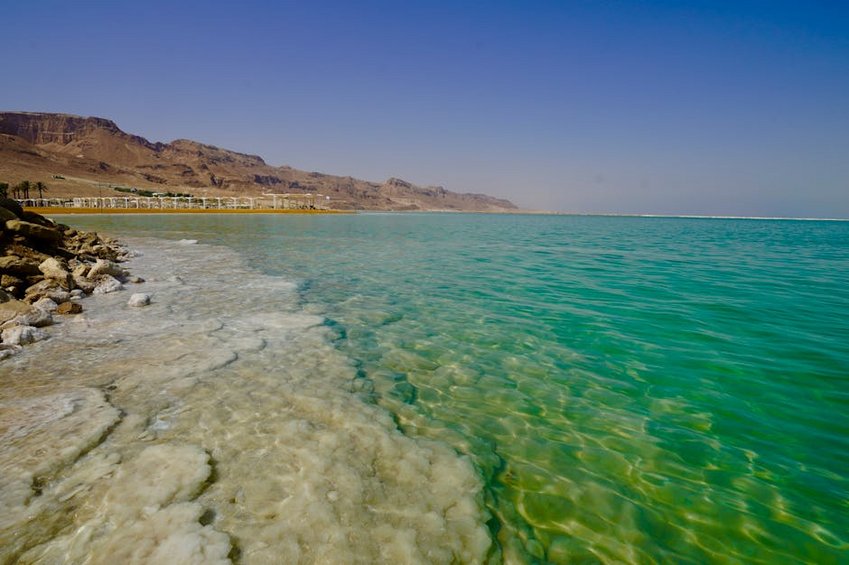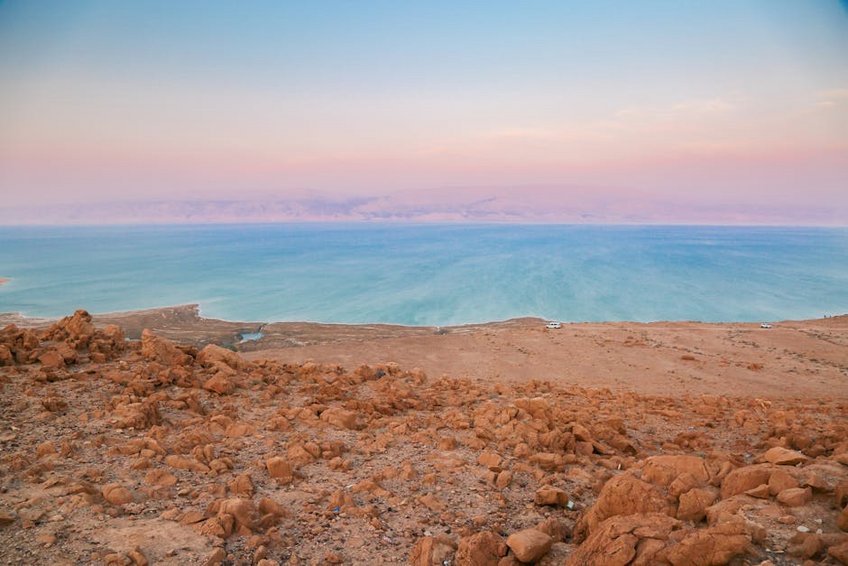Israel Dead Sea Floating Experience: Ultimate Buoyancy Adventure
Floating effortlessly in the mineral-rich waters of the Dead Sea provides a unique sensory adventure unmatched anywhere on Earth. This Israel Dead Sea floating experience combines natural buoyancy with therapeutic mud treatments amid stunning desert landscapes. Our guide delivers essential planning advice, top attraction details, and cultural insights for your visit.
Essential Dead Sea Information
The Dead Sea sits 430 meters below sea level, making it the lowest point on any continent. Its hypersaline water contains 34% salinity, creating the famous buoyancy effect. This unique environment forms between Israel and Jordan in the Jordan Rift Valley.
Historically, the area attracted figures like Herod the Great for its health benefits. Modern visitors access developed resorts along the Israeli coastline near Ein Bokek. The region experiences over 330 sunny days annually with minimal rainfall.
Unique Geological Features
Understanding these characteristics enhances your floating adventure preparation.
- The water density reaches 1.24 kg/liter compared to ocean’s 1.02 kg/liter, creating natural flotation without swimming skills.
- Mineral composition includes 31% magnesium, 13% calcium, and 12% potassium with therapeutic skin benefits verified by dermatological studies.
- Evaporation rates exceed 1.5 meters annually, causing constant shoreline changes requiring visitor awareness and caution.
- Budget travelers spend $800-$1200 using hostels, public buses, and free beach access while prioritizing supermarket meals and limited paid activities.
- Mid-range visitors allocate $1500-$2000 for resort hotels with private beach access, rental cars, and guided tours to Masada and Ein Gedi Nature Reserve.
- Luxury experiences cost $2200-$3000 featuring 5-star spa hotels, private transfers, therapeutic treatments, and fine dining with Dead Sea views.
- Israel Ministry of Tourism
- Lonely Planet Dead Sea Guide
Historical Significance
Dead Sea scroll discoveries in nearby Qumran caves revolutionized biblical scholarship during the 1940s. Cleopatra reportedly imported Dead Sea minerals for her legendary beauty regimens. The area’s history spans Canaanite, Israelite, Roman, and Byzantine civilizations across three millennia.
Modern development began in the 1960s with Israeli hotel construction along the southern basin. Today, the region balances tourism with environmental conservation efforts. Archaeological sites like Masada overlook the sea from western cliffs.
Health Benefits and Precautions
The mineral-rich black mud improves psoriasis and eczema symptoms through magnesium and bromide absorption. Floating reduces stress on joints while the atmospheric pressure benefits respiratory conditions. Always avoid submerging your head completely during the buoyancy experience.
Drink plenty of water since the arid climate causes rapid dehydration despite being in water. Rinse thoroughly after floating to prevent skin irritation from salt crystallization. Consult doctors before visiting if you have open wounds or cardiovascular issues.
Israel Dead Sea Floating Experience – Planning Your Trip
Successful Dead Sea visits require understanding seasonal patterns and regional logistics. Your Israel Dead Sea floating experience works best during spring or autumn months. Budget between $800-$2500 per person for a 5-day trip including accommodations and tours.
Book hotels 3-4 months early for November through April visits. The floating itself requires no special skills beyond basic water comfort. Combine your visit with Jerusalem and Masada for a comprehensive Israeli adventure.

Alt: “dead-sea-floating-buoyant-salt-crystals-desert-background”
Best Time to Visit the Dead Sea
Visit between March-May or September-November for ideal 75-85°F (24-29°C) temperatures. Summer months reach 100°F (38°C) regularly, making midday floating uncomfortable. Winter brings pleasant 60-70°F (15-21°C) days but cooler water sensations.
Shoulder seasons offer smaller crowds and better hotel rates around $150 nightly. December through February sees occasional rain but emptier beaches. Avoid July-August peak heat unless you tolerate extreme desert conditions well.
Budget Planning and Costs
Consider these tiered options for different travel styles.
Essential Preparation Checklist
Pack water shoes for sharp salt crystals and dark sunglasses for glare protection. Bring multiple swimsuits since salt damages fabric over repeated use. Include heavy moisturizers since the arid climate dries skin quickly.
Secure comprehensive travel insurance covering pre-existing conditions and adventure activities. Check passport validity extends six months beyond your departure date. Download navigation apps like Moovit for Israeli public transportation routes.
Top Attractions and Activities
The Dead Sea region offers historical sites, natural wonders, and unique wellness experiences beyond floating. Masada fortress sunrise tours provide breathtaking views over the sea. Ein Gedi Nature Reserve features desert oasis hiking trails with waterfalls and ibex sightings.
Modern spa resorts offer professional mud application and mineral treatments. Qumran National Park displays caves where the Dead Sea Scrolls were discovered. All locations remain accessible within 30-60 minutes from main resort areas.
Must-See Highlights
Masada’s ancient fortress requires cable car ascent or Snake Path hike at dawn. The UNESCO site reveals Herod’s palace ruins and Jewish rebel history. Visit before 10 AM to avoid extreme heat and crowds.
Ein Gedi’s David Stream trail leads to hidden waterfalls and natural pools. Spot rock hyraxes and Nubian ibex along well-marked paths. Carry 2 liters of water per person for this moderate 2-hour hike.
Dead Sea beaches like Ein Bokek provide free access with showers and changing facilities. Kalia Beach offers paid amenities including mud pools and loungers. Neve Midbar Beach features unique salt formations along the northern shore.
Hidden Gems and Local Favorites
Biankini Beach remains less crowded than main resort beaches with stunning salt formations. Locals favor this spot for sunset photography sessions. Access requires 4WD vehicle during dry season months.
Neot HaKikar village offers authentic Bedouin hospitality experiences with traditional meals. The area provides stargazing opportunities away from resort lights. Book through local tour operators for genuine cultural immersion.
Spa and Wellness Experiences
Professional spa treatments utilize Dead Sea minerals for detoxification and skin renewal. Ahava Visitor Center provides educational tours and product sampling. Most resorts offer massage therapies incorporating local mud and salts.
Float during early morning or late afternoon for optimal water temperature and lighting. The buoyant sensation feels strongest when lying completely still on your back. Avoid rubbing eyes since salt causes immediate discomfort requiring freshwater rinsing.
Practical Travel Information
Ben Gurion Airport (TLV) serves as the primary international gateway 120 km from the Dead Sea. Rental cars provide flexibility for exploring multiple sites across the region. Public bus routes operate regularly from Jerusalem with 90-minute travel times.
Resort areas feature medical clinics specializing in dehydration and salt-related incidents. English remains widely spoken in tourist areas and hotels. Credit cards are accepted everywhere except small local vendors.
| Category | Options/Features | Price Range (USD) |
|---|---|---|
| Accommodation | Beachfront resorts with spa facilities, budget hotels, hostel dorms | $80-$400 nightly |
| Transportation | Rental cars, public buses, private transfers, taxis | $20-$150 daily |
| Activities | Masada tours, Ein Gedi hiking, spa treatments, beach access | $15-$200 per activity |
| Dining | Resort restaurants, local eateries, supermarket self-catering | $15-$75 per person daily |


